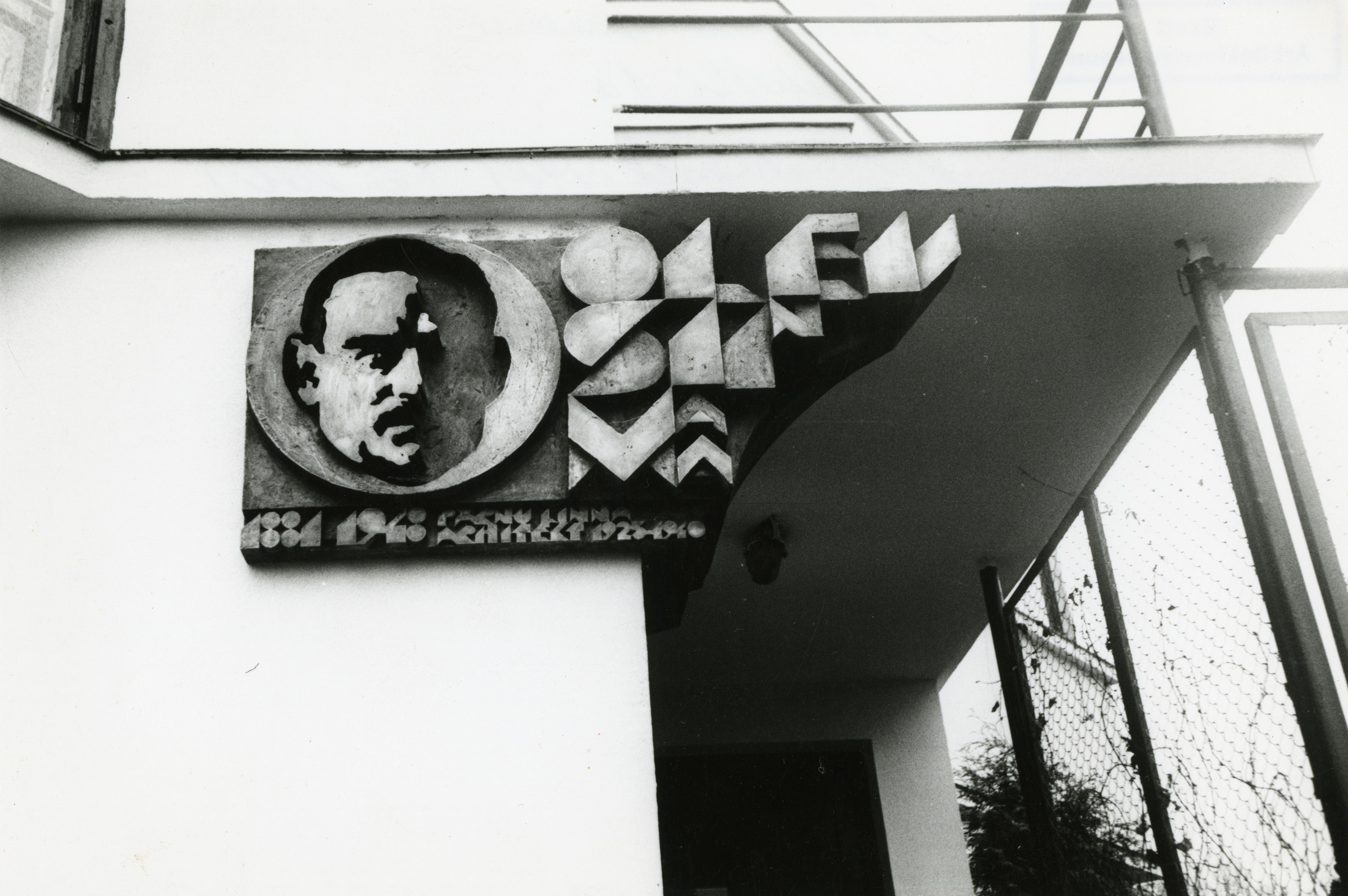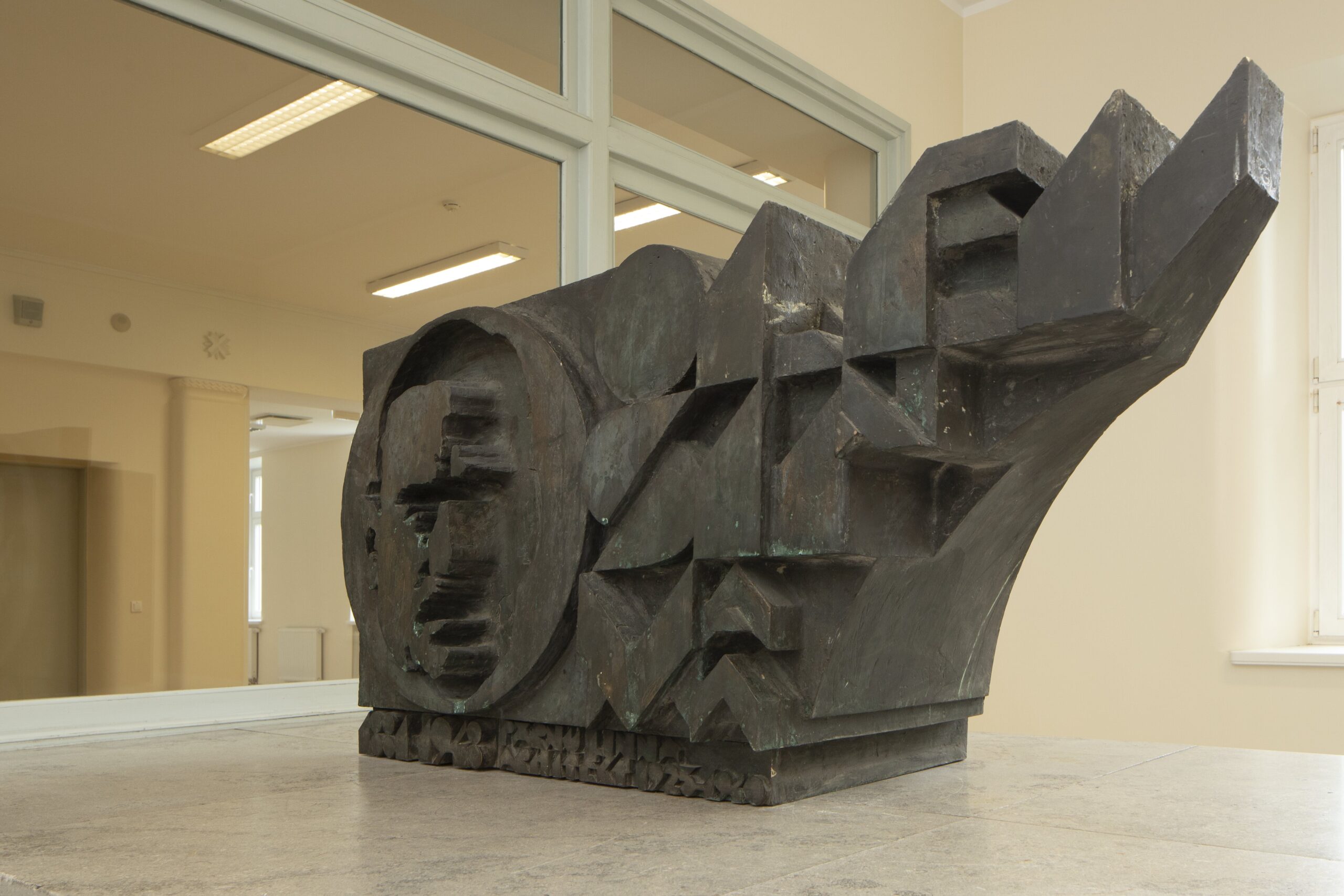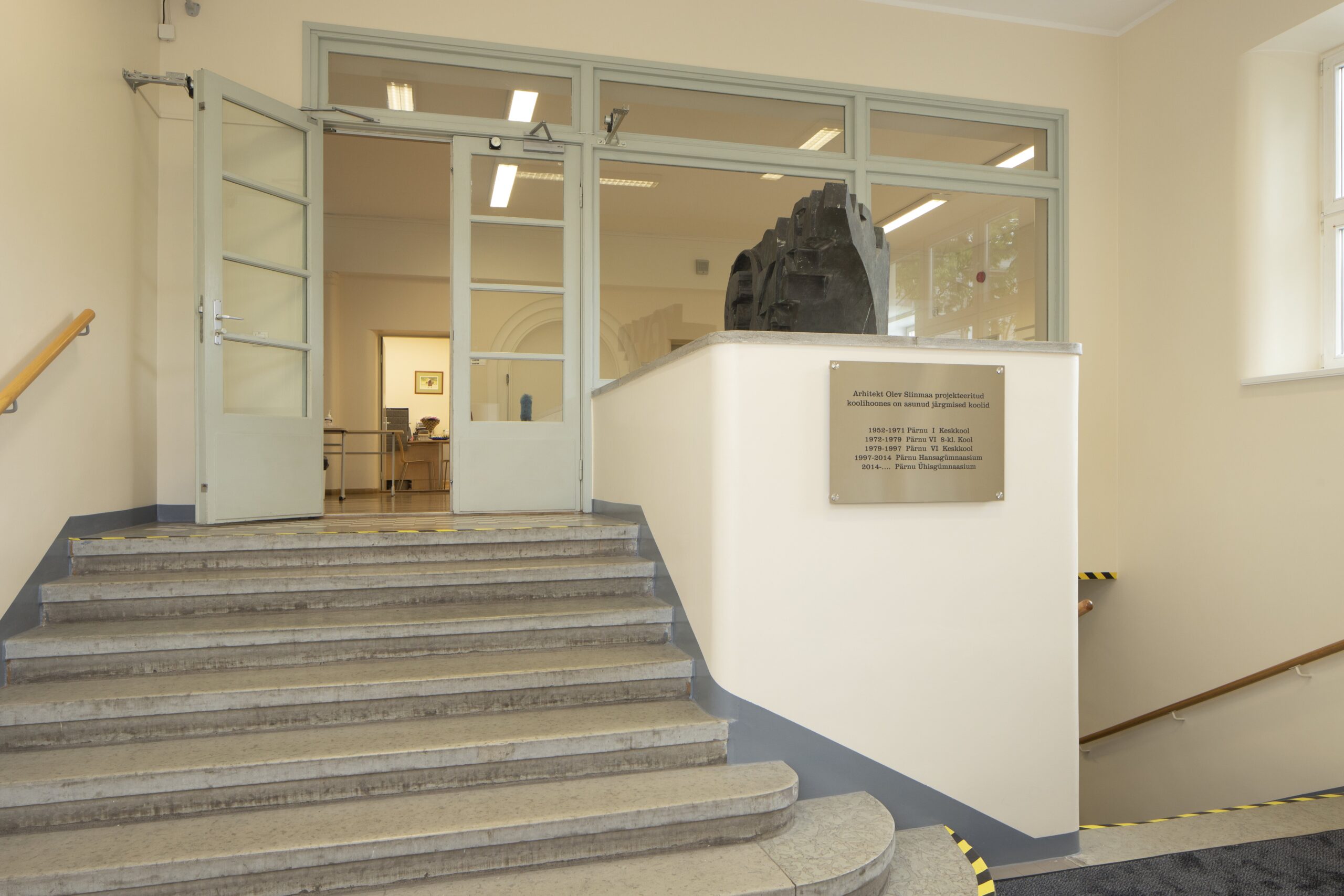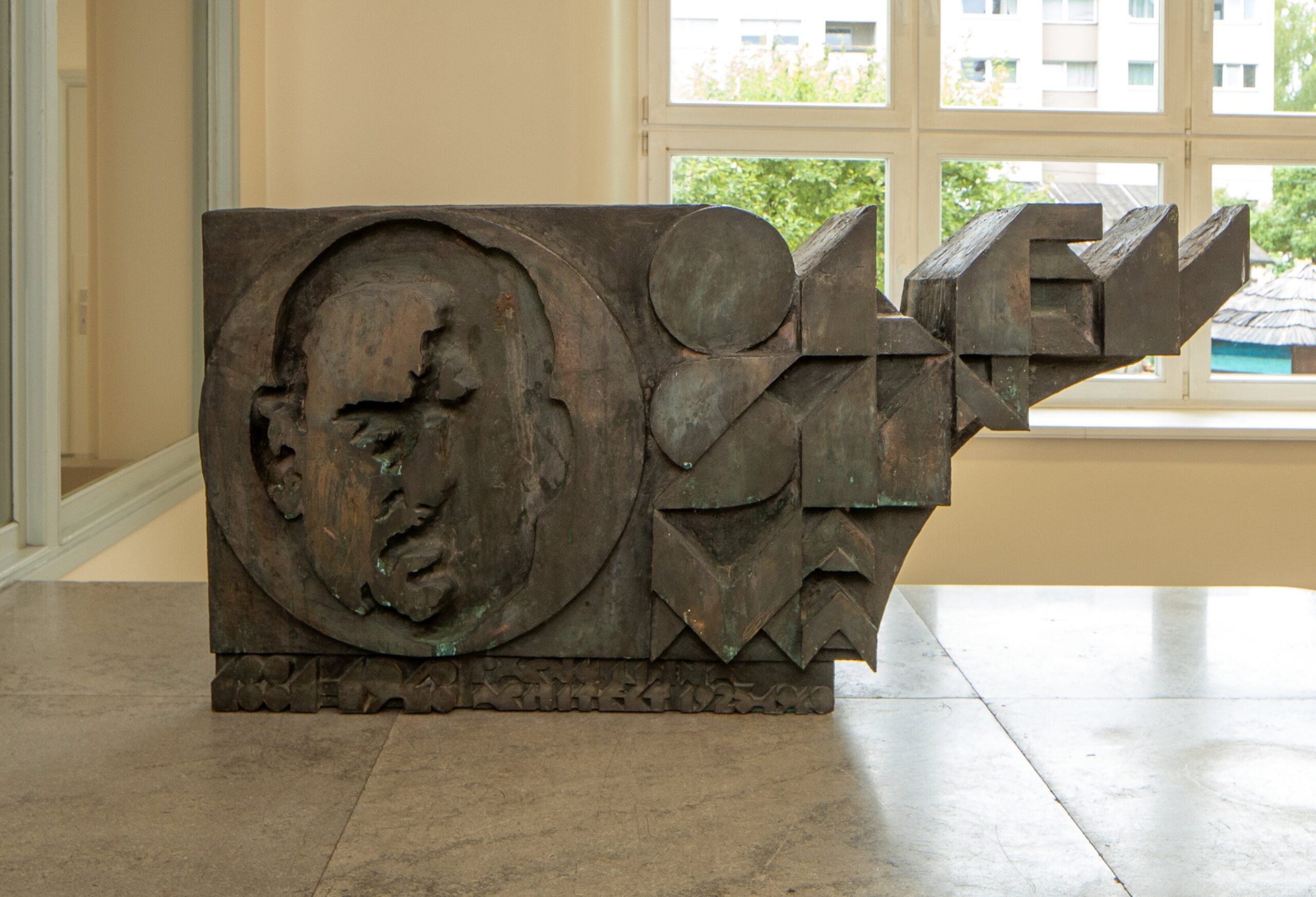Bas-relief of Olev Siinmaa
Year of completion: 1980
Address: Pärnu County, Pärnu, Kooli 13. Originally located at Rüütli 1a, Pärnu
Author Ekke Väli
Bronze
Not under conservation as a cultural monument
Olev Siinmaa (1881–1948) was one of the leading architects of the Interwar period, who left a powerful mark in the architectural scene of the summer holiday resort in the form of functionalist villas, a beach café, a hotel, and other constructions. Siinmaa was a functionalist in the word’s essential sense, not in the aesthetic-stylistic sense. The story of his own house has been said to be as follows: the mayor had doubted whether anyone would want to build themselves a house on a narrow triangular lot, and Siinmaa had accepted the challenge, designing a building that is now considered a masterpiece of Estonian functionalist architecture (1931–1933).
During the Soviet Union, the Interwar period architectural monument sunk into oblivion to some extent. The building was in poor condition, as available resources for construction was directed towards building new apartment buildings, and neither property management nor private owners had the directions, resources, or will to deal with the restoration of older architecture (although, as we know in hindsight, in a way, the fast influx of money following the restoration of independence had a more devastating effect on the monument than the slow fading of the Soviet Era). In addition to the built environment decaying, the architectural piece’s spiritual legacy was neglected as well. Bringing up topics related to the Estonian Republic was not very fashionable, due to which the ignorance only grew. It was only in the 1970s that the anti-modernist, environmentally oriented generation of young architects began extensive work on exploring and presenting Interwar period architecture. The celebration of any and all jubilees and anniversaries became popular. With this, the Union of Estonian Architects also managed to bypass a taboo, when in 1944 a bas-relief was erected for the one-hundredth birthday of Siinmaa, who had fled to Sweden during his lifetime.
The bas-relief is an age-old technique for the commemoration of someone. The artform could flourish in development in the Soviet Union, where great attention was paid to collective memory. In Estonia, proof of this can be seen, for example, in the form of the memorials for Jaak Soans, Voldemar Panso, and Michel Sittow. Siinmaa’s bas-relief was created by Ekke Väli, in his 20-s at the time – a young and promising sculptor who had also studied architecture for three years prior, and therefore exhibited the both the necessary “guild sense,” and great spatial awareness, which he benefitted from in his later profession in installation arts. Väli’s bas-relief is architectonically eye-catching but he in no way tried to dominate over the building itself in the artwork’s initial location. Already during the “Estonian new age”, when the building underwent a thorough renovation supervised by Taso Mähar, the bas-relief was removed. That is understandable, as compared to the 1980s, a lot has changed, and all the restored houses designed by Siinmaa act as monuments to their author. Today the bas-relief is on display at the Pärnu Ühisgümnaasium building, which Siinmaa designed. In 2016, a sculpture depicting Siinmaa resting on a park bench (sculptor Rene Reinumäe) was opened on a slope at Pärnu moat.
Gregor Taul










